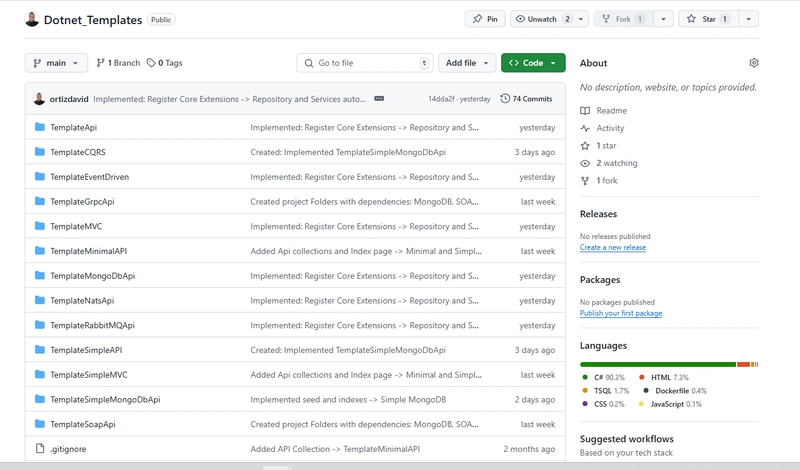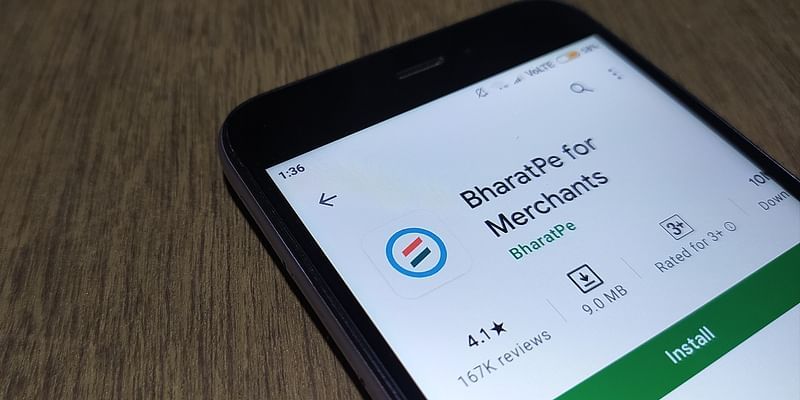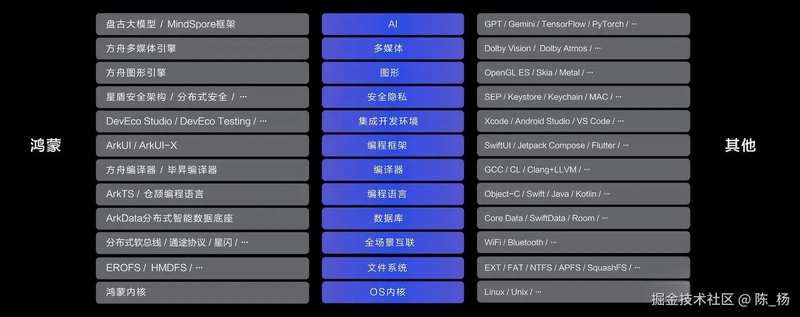Building a simple URL Shortener with Rails 8: A Step-by-Step Guide
In this tutorial, we'll walk through creating a modern URL shortener application called "YLL" (Your Link Shortener) using Rails 8. By the end, you'll have a fully functional application with features like link expiration and password protection. Introduction URL shorteners are web applications that create shorter aliases for long URLs. When users access these short links, they are redirected to the original URL. Our application, YLL, will provide: Short, unique codes for any URL Optional expiration dates Password protection Click tracking A full JSON API Prerequisites Ruby 3.4.2 Rails 8.0.1 Basic knowledge of Ruby on Rails Project Setup Let's start by creating a new Rails 8 application: # Install the latest Rails version if you haven't already gem install rails -v 8.0.1 # Create a new Rails application rails new yll --database=sqlite3 # Navigate to the project directory cd yll Database Design Our application revolves around a single model: Link. Let's create it: rails generate model Link url:string code:string:index password_digest:string expires_at:datetime clicks:integer Now let's run the migration: rails db:migrate The Link Model Edit the app/models/link.rb file to implement our model's business logic: class Link { url.present? && errors[:url].none? } validate :expires_at_must_be_in_future, if: -> { expires_at.present? } # Callbacks before_validation :normalize_url before_validation :generate_unique_code, on: :create def to_param code end def to_json(*) { original_url: url, short_url: short_url, created_at: created_at, expires_at: expires_at, code: code, clicks: clicks }.to_json end def expired? expires_at.present? && expires_at e errors.add(:url, "contains invalid characters or format", e.message) end end def generate_unique_code self.code ||= loop do random_code = SecureRandom.alphanumeric(8) break random_code unless self.class.exists?(code: random_code) end end def validate_url_security return if errors[:url].any? uri = URI.parse(url) errors.add(:url, "must use HTTPS protocol") unless uri.scheme == "https" rescue URI::InvalidURIError # Already handled by format validation end def validate_url_availability response = Faraday.head(url) do |req| req.options.open_timeout = 3 req.options.timeout = 5 end unless response.success? || response.status == 301 || response.status == 302 errors.add(:url, "could not be verified (HTTP #{response.status})") end rescue Faraday::Error => e errors.add(:url, "could not be reached: #{e.message}") end def expires_at_must_be_in_future errors.add(:expires_at, "must be in the future") if expires_at

In this tutorial, we'll walk through creating a modern URL shortener application called "YLL" (Your Link Shortener) using Rails 8. By the end, you'll have a fully functional application with features like link expiration and password protection.
Introduction
URL shorteners are web applications that create shorter aliases for long URLs. When users access these short links, they are redirected to the original URL. Our application, YLL, will provide:
- Short, unique codes for any URL
- Optional expiration dates
- Password protection
- Click tracking
- A full JSON API
Prerequisites
- Ruby 3.4.2
- Rails 8.0.1
- Basic knowledge of Ruby on Rails
Project Setup
Let's start by creating a new Rails 8 application:
# Install the latest Rails version if you haven't already
gem install rails -v 8.0.1
# Create a new Rails application
rails new yll --database=sqlite3
# Navigate to the project directory
cd yll
Database Design
Our application revolves around a single model: Link. Let's create it:
rails generate model Link url:string code:string:index password_digest:string expires_at:datetime clicks:integer
Now let's run the migration:
rails db:migrate
The Link Model
Edit the app/models/link.rb file to implement our model's business logic:
class Link < ApplicationRecord
has_secure_password validations: false
# Validations
validates :url, presence: true,
format: {
with: URI::DEFAULT_PARSER.make_regexp(%w[http https]),
message: "must be a valid HTTP/HTTPS URL"
}
validates :code, presence: true,
uniqueness: true,
length: { is: 8 }
validate :validate_url_security
validate :validate_url_availability, if: -> { url.present? && errors[:url].none? }
validate :expires_at_must_be_in_future, if: -> { expires_at.present? }
# Callbacks
before_validation :normalize_url
before_validation :generate_unique_code, on: :create
def to_param
code
end
def to_json(*)
{
original_url: url,
short_url: short_url,
created_at: created_at,
expires_at: expires_at,
code: code,
clicks: clicks
}.to_json
end
def expired?
expires_at.present? && expires_at <= Time.current
end
def short_url
Rails.application.routes.url_helpers.redirect_url(code)
end
private
def normalize_url
return if url.blank?
begin
uri = Addressable::URI.parse(url).normalize
self.url = uri.to_s
rescue Addressable::URI::InvalidURIError => e
errors.add(:url, "contains invalid characters or format", e.message)
end
end
def generate_unique_code
self.code ||= loop do
random_code = SecureRandom.alphanumeric(8)
break random_code unless self.class.exists?(code: random_code)
end
end
def validate_url_security
return if errors[:url].any?
uri = URI.parse(url)
errors.add(:url, "must use HTTPS protocol") unless uri.scheme == "https"
rescue URI::InvalidURIError
# Already handled by format validation
end
def validate_url_availability
response = Faraday.head(url) do |req|
req.options.open_timeout = 3
req.options.timeout = 5
end
unless response.success? || response.status == 301 || response.status == 302
errors.add(:url, "could not be verified (HTTP #{response.status})")
end
rescue Faraday::Error => e
errors.add(:url, "could not be reached: #{e.message}")
end
def expires_at_must_be_in_future
errors.add(:expires_at, "must be in the future") if expires_at <= Time.current
end
end
Setting Up Dependencies
Add the required gems to your Gemfile:
# Add these to your Gemfile
gem "addressable", "~> 2.8"
gem "faraday", "~> 2.7"
gem "bcrypt", "~> 3.1.16"
Then install the gems:
bundle install
Creating Controllers
Redirects Controller
First, let's create the controller that will handle the redirection:
rails generate controller Redirects show
Now, edit app/controllers/redirects_controller.rb:
class RedirectsController < ApplicationController
rescue_from ActiveRecord::RecordNotFound, with: :link_not_found
before_action :set_link, only: :show
before_action :authenticate, only: :show, if: -> { @link.password_digest.present? }
after_action :increment_clicks, only: :show, if: -> { response.status == 302 }
def show
if @link.expired?
render file: Rails.root.join("public", "410.html"), status: :gone, layout: false
else
# Brakeman: ignore
redirect_to @link.url, allow_other_host: true
end
end
private
def authenticate
authenticate_or_request_with_http_basic("Links") do |username, password|
username == @link.code && @link.authenticate(password)
end
end
def increment_clicks
@link.increment!(:clicks)
end
def set_link
@link = Link.find_by!(code: params[:code])
end
def link_not_found
render json: { error: "Link not found" }, status: :not_found
end
end
API Controller
Now, let's create the API controller for programmatic access:
rails generate controller Api::V1::Links create show
Edit app/controllers/api/v1/links_controller.rb:
module Api
module V1
class LinksController < ApplicationController
rate_limit to: 10, within: 3.minutes, only: :create, with: -> { render_rejection :too_many_requests }
protect_from_forgery with: :null_session
# POST /api/v1/links
def create
link = Link.new(link_params)
if link.save
render json: link.to_json, status: :created
else
render json: { errors: link.errors.full_messages }, status: :unprocessable_entity
end
end
# GET /api/v1/links/:code
def show
link = Link.find_by(code: params[:code])
if link
render json: link.to_json
else
render json: { error: "Link not found" }, status: :not_found
end
end
private
def link_params
params.permit(:url, :password, :expires_at)
end
end
end
end
Setting Up Routes
Edit config/routes.rb to define our application routes:
Rails.application.routes.draw do
# API routes
namespace :api do
namespace :v1 do
resources :links, only: [:create, :show], param: :code
end
end
# Redirect route
get 'r/:code', to: 'redirects#show', as: :redirect
# Root route (for a future web interface)
root 'links#new'
end
Application Controller
Update app/controllers/application_controller.rb to handle cache control and modern browsers:
class ApplicationController < ActionController::Base
# Only allow modern browsers supporting webp images, web push, badges, import maps, CSS nesting, and CSS :has.
allow_browser versions: :modern
protect_from_forgery with: :exception, unless: -> { request.format.json? }
before_action :set_cache_control_headers
private
def set_cache_control_headers
response.headers["Cache-Control"] = "no-store"
end
end
Basic Web Interface
Let's create a simple web interface for creating links. First, generate a Links controller for the web interface:
rails generate controller Links new create
Edit app/controllers/links_controller.rb:
class LinksController < ApplicationController
def new
@link = Link.new
end
def create
@link = Link.new(link_params)
if @link.save
redirect_to link_path(@link.code), notice: 'Link successfully created!'
else
render :new, status: :unprocessable_entity
end
end
def show
@link = Link.find_by!(code: params[:code])
end
private
def link_params
params.require(:link).permit(:url, :password, :expires_at)
end
end
Now create the views:
Create a Short Link
<%= form_with(model: @link, url: links_path) do |form| %>
<% if @link.errors.any? %>
id="error_explanation">
<%= pluralize(@link.errors.count, "error") %> prohibited this link from being saved:
<% @link.errors.each do |error| %>
<%= error.full_message %>
<% end %>








































































































































































![[The AI Show Episode 143]: ChatGPT Revenue Surge, New AGI Timelines, Amazon’s AI Agent, Claude for Education, Model Context Protocol & LLMs Pass the Turing Test](https://www.marketingaiinstitute.com/hubfs/ep%20143%20cover.png)



































































































































![From drop-out to software architect with Jason Lengstorf [Podcast #167]](https://cdn.hashnode.com/res/hashnode/image/upload/v1743796461357/f3d19cd7-e6f5-4d7c-8bfc-eb974bc8da68.png?#)










































































































.jpg?#)




























_ArtemisDiana_Alamy.jpg?#)













































































-xl.jpg)












![Yes, the Gemini icon is now bigger and brighter on Android [U]](https://i0.wp.com/9to5google.com/wp-content/uploads/sites/4/2025/02/Gemini-on-Galaxy-S25.jpg?resize=1200%2C628&quality=82&strip=all&ssl=1)











![Apple Rushes Five Planes of iPhones to US Ahead of New Tariffs [Report]](https://www.iclarified.com/images/news/96967/96967/96967-640.jpg)
![Apple Vision Pro 2 Allegedly in Production Ahead of 2025 Launch [Rumor]](https://www.iclarified.com/images/news/96965/96965/96965-640.jpg)
































































































































